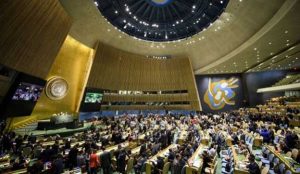Vista, California, July 31, 2023 (GLOBE NEWSWIRE) — Watkins Wellness, a leader in hot tubs and aquatic fitness systems, today announced the expansion of its portfolio of personal well–being products and entry into the sauna category as a result of the pending acquisition of Sauna360 Group Oy ("Sauna360") by Watkins Wellness' parent company, Masco Corporation. Sauna360 is a leading global manufacturer of sauna solutions, and its portfolio of products includes traditional, infrared, and wood–burning saunas as well as steam showers, rooms and generators. These products are sold primarily in the United States, Europe and throughout the rest of the world under the Tyl, Helo, Kastor, Finnleo, and Amerec brands. The transaction is expected to close in the third quarter, subject to regulatory approval.
"We are thrilled to welcome Sauna360 to our organization and to expand our portfolio of industry–leading products aimed at promoting wellness and helping our customers feel good and live well!" said Vijaikrishna (VJ) Teenarsipur, President of Watkins Wellness. "Sauna360 brings a wealth of industry knowledge and expertise to our business. We look forward to leveraging the synergies between our businesses, which will allow us to better serve our dealer partners, consumers and, ultimately, the growing wellness market."
"I am very pleased for Sauna360 to become part of Watkins Wellness. Sauna360's business has grown in recent years, and becoming part of Watkins Wellness will further strengthen our capability and ambition to be a leading sauna player. The dealer distribution strategy, common focus on wellness and similar company cultures make this a true strategic fit," said Pekka Lettijeff, President & CEO of Sauna360 Group.
Founded in 2008 as a merger between two leading sauna companies, Helo and Tyl, Sauna360 brings decades of industry knowledge and experience resulting from a strong history, with Helo's origin dating back to 1919 and Tyl's to 1949. The company is headquartered in Finland and has approximately 180 employees located in Finland, Sweden, the United States, and England.
About Watkins Wellness
Watkins Wellness, established in 1977 in Vista, California, is dedicated to promoting wellness to consumers to help them feel good and live well. The company's growing portfolio of well–being products for at–home use provides multiple pathways to wellness. Our portfolio of brands includes Hot Spring Spas, Caldera Spas, Freeflow Spas, Fantasy Spas, and Endless Pools Fitness Systems, sold predominantly through a specialty dealer network of more than 1,000 dealer partners located in 70+ countries. Watkins Wellness is a wholly owned subsidiary of Masco Corporation (NYSE: MAS).
About Masco Corporation
Headquartered in Livonia, Michigan, Masco Corporation is a global leader in the design, manufacture and distribution of branded home improvement and building products. Our portfolio of industry–leading brands includes BEHR paint; Delta and Hansgrohe faucets, bath and shower fixtures; and Hot Spring Spas. We leverage our powerful brands across product categories, sales channels, and geographies to create value for our customers and shareholders. For more information about Masco Corporation, visit www.masco.com.
Safe Harbor Statement
Watkins Wellness is a subsidiary of Masco Corporation. As such, this press release contains statements that reflect views about Masco Corporation's future performance and constitute "forward–looking statements" under the Private Securities Litigation Reform Act of 1995. Forward–looking statements can be identified by words such as "outlook," "believe," "anticipate," "appear," "may," "will," "should," "intend," "plan," "estimate," "assume," "seek," "forecast," and similar references to future periods. These views about future performance involve risks and uncertainties that are difficult to predict and, accordingly, Masco Corporation's actual results may differ materially from the results discussed in these forward–looking statements. We caution you against relying on any of these forward–looking statements.
Risks and uncertainties include, among other things, the expected closing of the Sauna360 transaction and the expected benefits and synergies of the acquisition, including the expected impact on future financial and operating results and post–acquisition plans and intentions. Masco Corporation's future performance may also be affected by the levels of residential repair and remodel activity, and to a lesser extent, new home construction, the ability to maintain strong brands and to develop innovative products, the ability to maintain its public reputation, the ability to maintain its competitive position in its industries, reliance on key customers, the cost and availability of materials, dependence on suppliers and service providers, extreme weather events and changes in climate, risks associated with international operations and global strategies, the ability to achieve the anticipated benefits of its strategic initiatives, the ability to successfully execute its acquisition strategy and integrate businesses that it has acquired and may in the future acquire, the ability to attract, develop and retain a talented and diverse workforce, risks associated with cybersecurity vulnerabilities, threats and attacks, risks associated with reliance on information systems and technology and the impact of the ongoing COVID–19 pandemic on its business and operations. These and other factors are discussed in detail in Item 1A. “Risk Factors” in Masco Corporation's most recent Annual Report on Form 10–K, as well as in Masco Corporation's Quarterly Reports on Form 10–Q and in other filings it makes with the Securities and Exchange Commission. The forward–looking statement in this press release speaks only as of the date of this press release. Factors or events that could cause Masco Corporation's actual results to differ may emerge from time to time, and it is not possible to predict all of them. Unless required by law, Masco Corporation undertakes no obligation to update publicly any forward–looking statements as a result of new information, future events or otherwise.
# # #
Attachment

GLOBENEWSWIRE (Distribution ID 8883225)





